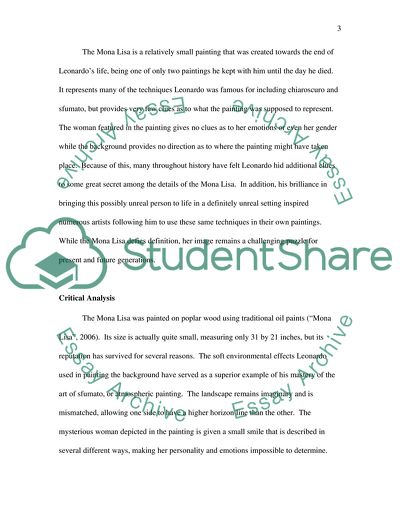Cite this document
(Leonardo's Mona Lisa Report Example | Topics and Well Written Essays - 2000 words, n.d.)
Leonardo's Mona Lisa Report Example | Topics and Well Written Essays - 2000 words. https://studentshare.org/visual-arts-film-studies/1705492-leonardo-divinci-and-the-mona-lisa
Leonardo's Mona Lisa Report Example | Topics and Well Written Essays - 2000 words. https://studentshare.org/visual-arts-film-studies/1705492-leonardo-divinci-and-the-mona-lisa
(Leonardo'S Mona Lisa Report Example | Topics and Well Written Essays - 2000 Words)
Leonardo'S Mona Lisa Report Example | Topics and Well Written Essays - 2000 Words. https://studentshare.org/visual-arts-film-studies/1705492-leonardo-divinci-and-the-mona-lisa.
Leonardo'S Mona Lisa Report Example | Topics and Well Written Essays - 2000 Words. https://studentshare.org/visual-arts-film-studies/1705492-leonardo-divinci-and-the-mona-lisa.
“Leonardo'S Mona Lisa Report Example | Topics and Well Written Essays - 2000 Words”. https://studentshare.org/visual-arts-film-studies/1705492-leonardo-divinci-and-the-mona-lisa.


